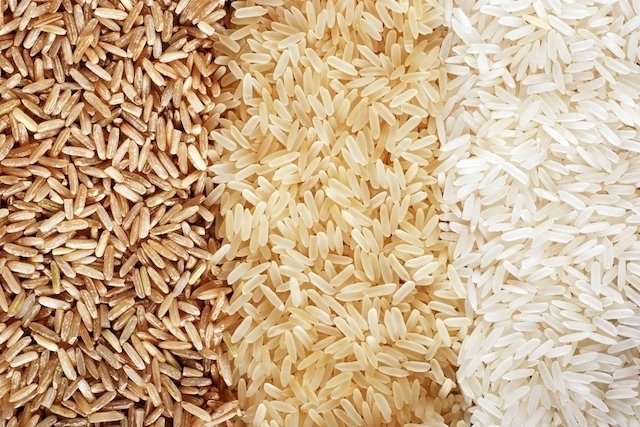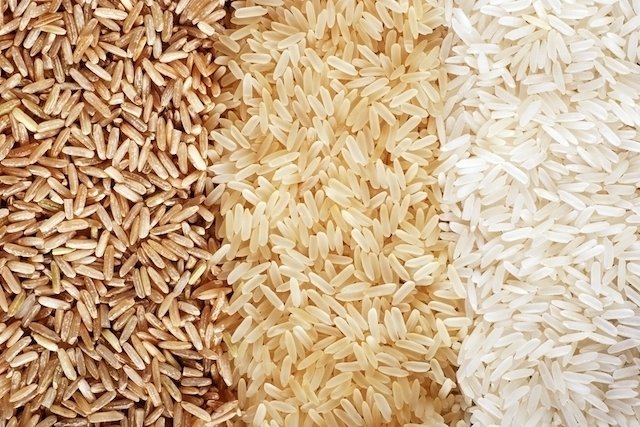Brown rice is a cereal rich in complex carbohydrates, fiber, vitamins and minerals, as well as other substances that have antioxidant properties, such as polyphenols, oryzanol, phytosterols, tocotrienol and carotenoids. Therefore, regular consumption of brown rice can help prevent diseases such as diabetes, cardiovascular changes and the development of cancer.
The main difference between brown and white rice is that the husk and germ are removed from the latter, which is the part of the grain that is rich in fiber and contains all the nutrients mentioned above, which is why white rice is associated with an increased risk of developing chronic diseases.

Main benefits
The main health benefits of brown rice are:
1. Improve gut health
Brown rice is rich in fiber, helping to increase stool volume and facilitate evacuation, making it an excellent option for those suffering from constipation, as well as helping to regulate bowel function.
2. Promote weight loss
Despite containing carbohydrates, it also has fiber which, when consumed in moderate amounts, helps to increase the feeling of satiety and reduce food consumption. Furthermore, brown rice has several bioactive compounds, namely gamma oryzanol, which is a promising compound against obesity.
3. Lower cholesterol
Brown rice is rich in antioxidant substances, helping to regulate cholesterol levels and preventing the oxidation of fats, reducing the risk of cardiovascular diseases, such as atherosclerosis, stroke and heart attack.
4. Regulate blood sugar
Due to the presence of fiber, brown rice has a moderate glycemic index, so blood glucose does not rise as much when consumed.
Furthermore, some studies indicate that its antidiabetic properties may also be related to gamma oryzanol, which protects the pancreas cells responsible for producing insulin, which is a hormone that helps regulate sugar.
5. Prevent cancer
Brown rice has bioactive compounds with antioxidant and anti-inflammatory properties, which protect cells from damage caused by free radicals.
6. Maintain cognitive health
Brown rice has a neuroprotective effect due to the presence of antioxidants, helping to prevent neurodegenerative diseases, such as Alzheimer’s, Parkinson’s and dementia, for example.
7. It has good quality proteins
Brown rice has good quality proteins, which are structures formed by different amino acids, such as lysine. Thus, when the amino acids from brown rice are combined with the amino acids from some legumes, such as beans, chickpeas or peas, they create a good quality protein, which can be an excellent option for vegans, vegetarians or those with celiac disease.
Furthermore, a scientific study reports that the protein in brown rice is comparable to that of soy and whey protein.
Brown rice nutritional information
The table below compares the nutritional value of brown rice with that of white rice:
It is important to mention that to obtain the benefits of brown rice, this food must be part of a balanced and healthy diet.
How to prepare brown rice
The proportion for cooking rice is 1:3, that is, the amount of water should always be three times that of the rice. First, the brown rice must be soaked, adding enough water to cover it, for about 20 minutes.
To prepare the rice, add 1 or 2 tablespoons of oil to a pan and, when it is hot, add 1 cup of brown rice and mix to prevent it from sticking. Then, add 3 cups of water and a pinch of salt, cook over medium heat until the water boils and, when this happens, the temperature must be reduced to low heat, then cover the pan, to cook for approximately 30 minutes. or more until cooked.
When you start to see holes between the rice, turn off the heat and let it rest for a few more minutes with the lid open, allowing the rice to finish absorbing the water.
Check out the following video for a recipe for brown rice with vegetables that can help you lose weight and regulate cholesterol:

Sign up for our newsletter and stay up to date with exclusive news
that can transform your routine!
Warning: Undefined array key "title" in /home/storelat/public_html/wp-content/plugins/link-whisper-premium/templates/frontend/related-posts.php on line 12
Warning: Undefined array key "title_tag" in /home/storelat/public_html/wp-content/plugins/link-whisper-premium/templates/frontend/related-posts.php on line 13




